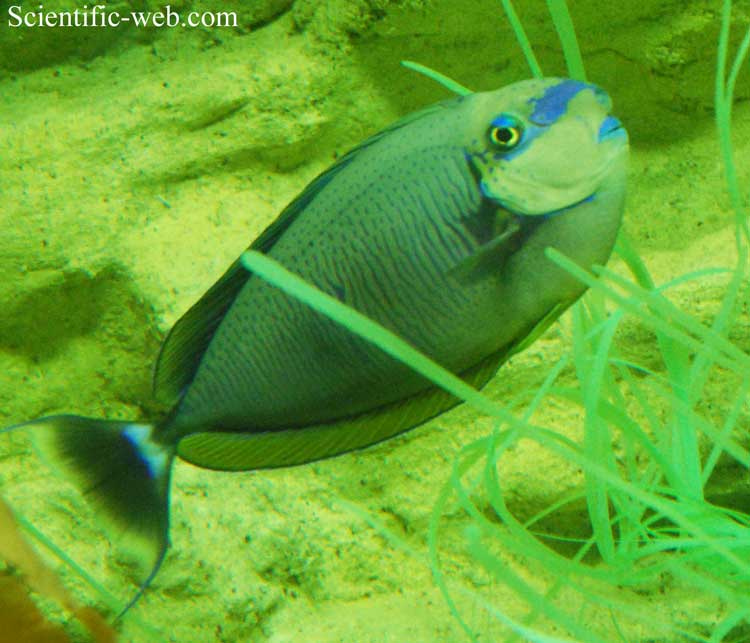Naso vlamingii, Photo: Michael Lahanas Cladus: Eukaryota --------- Naso vlamingii is a tropical fish with common names Vlamingii tang and bignose unicornfish. Appearance They are relatively large fish in comparison to other fish in the Acanthuridae family easily reaching 60.0 cm. As a juvenile the fish's coloration is a dingy green with blue spots and lips later changing to a bluer fish with purple markings. However while the fish sleeps, or is frightened, it turns a muddy brown as camouflage. Diet The Vlamingii tang is mostly herbivorous but will eat small crustaceans such as copepods, brine shrimp and mysis shrimp. Most of their natural diet is algae. Range The Vlamingii tang is found in the Indo-Pacific oceans off the coasts of East Africa, on the islands of Marquesas and Tuamotu, southern Japan and southern areas of the Great Barrier Reef. The Vlamingii tang is most often found in association with reefs and coastal lagoons sometimes in small schools. Economic value The Naso vlamingii has little to no value to commercial fishers but is occasionally available in the marine aquarium industry as a higher priced, rarer fish than most tangs available to aquarists. * Naso vlamingii at Fish Base
Source: Wikispecies, Wikipedia: All text is available under the terms of the GNU Free Documentation License |
|

